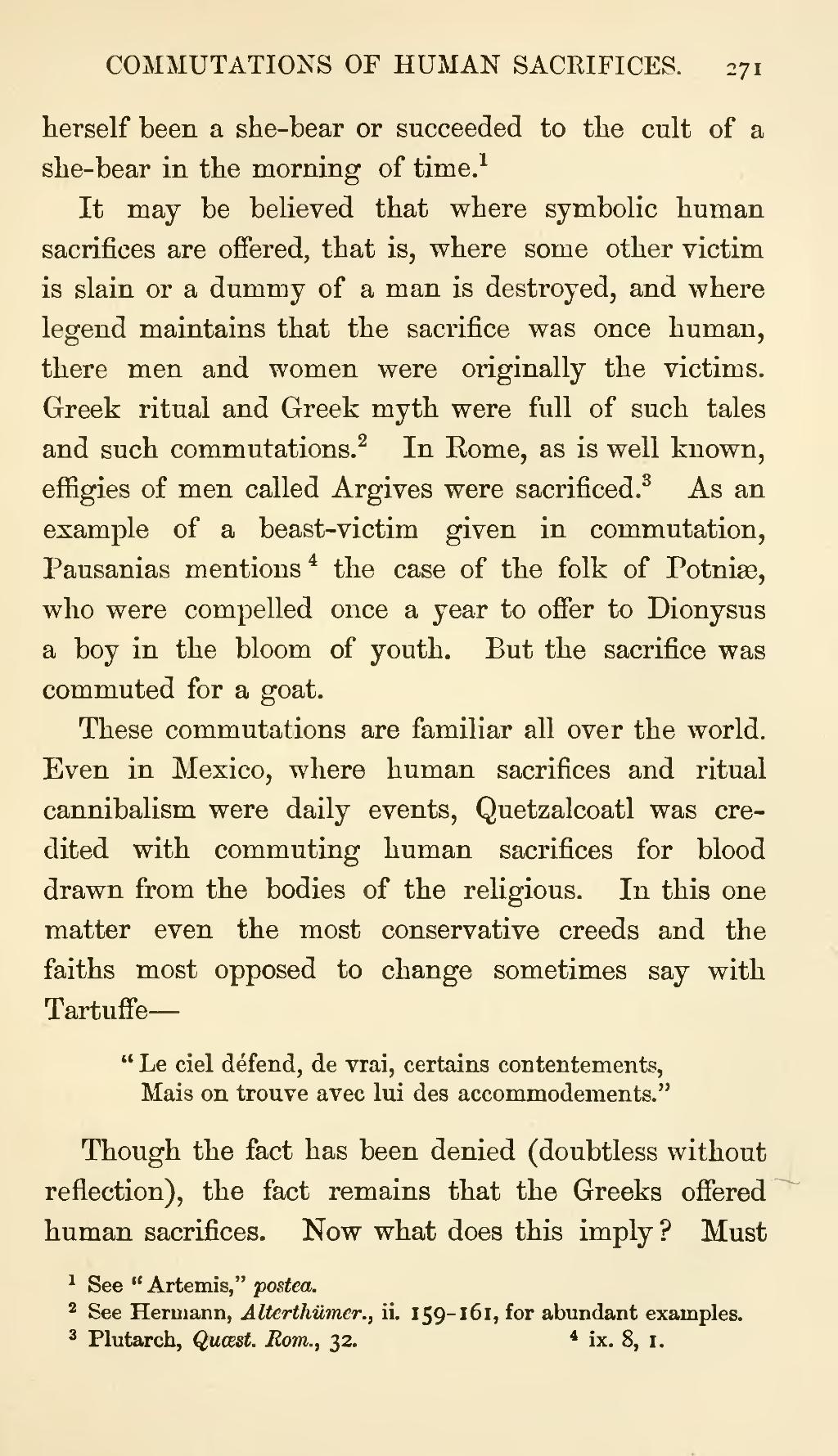herself been a she-bear or succeeded to the cult of a she-bear in the morning of time.[1]
It may be believed that where symbolic human sacrifices are offered, that is, where some other victim is slain or a dummy of a man is destroyed, and where legend maintains that the sacrifice was once human, there men and women were originally the victims. Greek ritual and Greek myth were full of such tales and such commutations.[2] In Rome, as is well known, effigies of men called Argives were sacrificed.[3] As an example of a beast-victim given in commutation, Pausanias mentions[4] the case of the folk of Potniæ, who were compelled once a year to offer to Dionysus a boy in the bloom of youth. But the sacrifice was commuted for a goat.
These commutations are familiar all over the world. Even in Mexico, where human sacrifices and ritual cannibalism were daily events, Quetzalcoatl was credited with commuting human sacrifices for blood drawn from the bodies of the religious. In this one matter even the most conservative creeds and the faiths most opposed to change sometimes say with Tartuffe—
"Le ciel défend, de vrai, certains contentements,
Mais on trouve avec lui des accommodements."
Though the fact has been denied (doubtless without reflection), the fact remains that the Greeks offered human sacrifices. Now what does this imply? Must
- ↑ See "Artemis," postea.
- ↑ See Hermann, Alterthümer., ii. 159–161, for abundant examples.
- ↑ Plutarch, Quæst. Rom., 32.
- ↑ ix. 8, 1.
